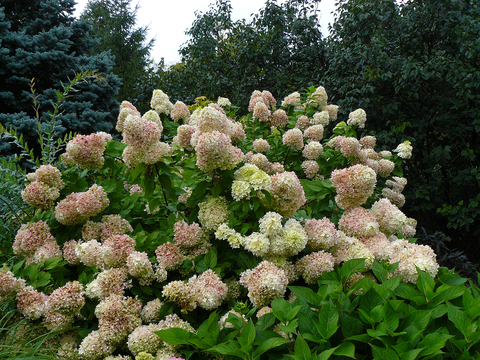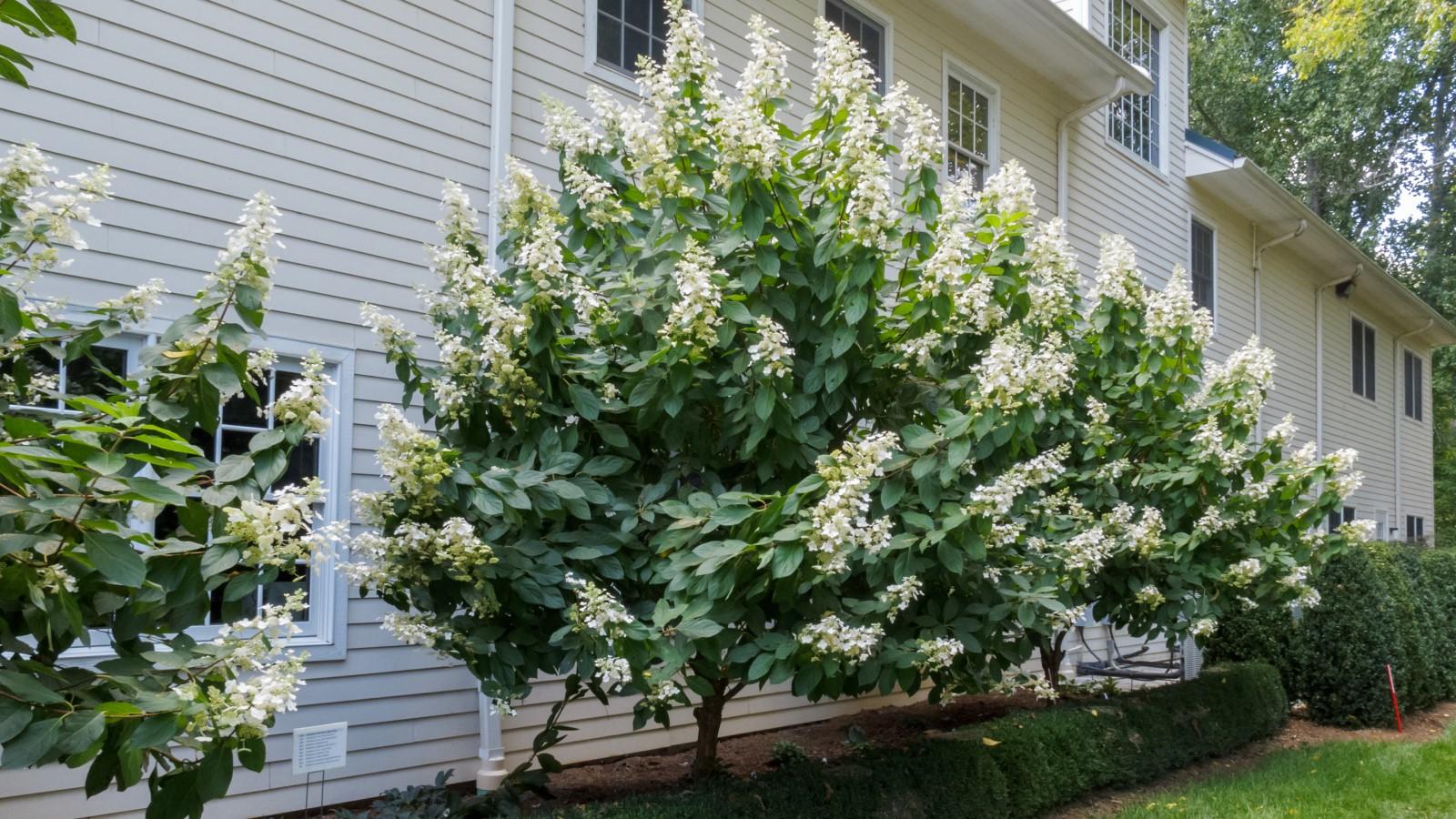What To Do With Old Hydrangea Blooms in Fall (And Why It Matters)
Late‑Fall Hydrangea Dilemma: Cut the Old Blooms or Leave Them?
Every fall, gardeners ask the same question: “Do I cut the dead heads off now, or will I lose blooms?” The correct move depends on two things—your hydrangea’s bloom wood (old vs. new) and your winter risk. On old‑wood types, leaving the last blooms can shield the tender buds you’re counting on next spring; in cold zones, I leave them until early spring. On new‑wood types, you can tidy freely in fall without sacrificing next season’s flowers. RHS, Missouri Botanical Garden
- Bigleaf & Mountain (old wood): Leave final blooms through winter; if tidying, cut only the head and 1–2 inches of stem, and stop by August in cold regions. Remove in early spring to the first strong bud pair. RHS, Missouri Botanical Garden
- Oakleaf (old wood): Structural pruning right after bloom (summer). In fall, leave heads or snip only the bloom; don’t cut into bud‑bearing stems. University of Maryland Extension, Wisconsin Horticulture
- Smooth & Panicle (new wood): Deadhead in fall if you like; do major shaping when dormant (late winter/early spring). University of Minnesota Extension, University of Maryland Extension
- Climbing (old wood): Minimal pruning; shorten over‑long shoots right after flowering, not in fall. RHS

Why Your Fall Choice Matters
- Bud protection on old‑wood types: Dried heads can shelter tender buds from frost and wind; remove them in early spring instead. RHS, Martha Stewart
- Avoid soft, late growth: Hard fall cuts can stimulate growth that fails to harden before winter. Missouri Botanical Garden, The Spruce
- Winter interest & structure: Mop and cone heads catch frost/snow—beautiful and practical. University of Minnesota Extension, Gardeners’ World
Old Wood vs. New Wood—Know This Before You Cut
- Old‑wood bloomers: Bigleaf (H. macrophylla), Mountain (H. serrata), Oakleaf (H. quercifolia), Climbing (H. anomala subsp. petiolaris). Prune just after flowering; avoid fall cuts into bud‑bearing stems. University of Maryland Extension, Missouri Botanical Garden
- New‑wood bloomers: Smooth (H. arborescens), Panicle (H. paniculata). Deadhead anytime after bloom; major cuts while dormant. University of Maryland Extension, RHS
- Rebloomers: Endless Summer‑type bigleaf/mountain flower on both old & new wood; stop deadheading mid–late fall and let final blooms stand. University of Minnesota Extension, Endless Summer
What To Do With Old Blooms in Fall—By Hydrangea Type
Bigleaf (Hydrangea macrophylla) & Mountain (H. serrata)
🌱What I do
In Zones 5–6, I leave the final blooms until early spring for frost protection. If you must tidy in fall, remove only the spent head plus 1–2 inches of stem—no deeper—and stop all cuts by August in cold regions to avoid removing next year’s buds. In spring, cut to the first strong pair of buds. RHS, Missouri Botanical Garden
💡Why it matters
These set flower buds late summer to early fall; fall cuts into live stems can remove next year’s display. Lacecaps are a bit hardier and can be deadheaded after flowering to the second pair of leaves. University of Minnesota Extension, Gardeners’ World
Oakleaf (Hydrangea quercifolia)
✅Do this
Leave final heads on in fall. Perform structural pruning right after flowering in summer; in fall, avoid cutting into old wood that bears next year’s buds. Wisconsin Horticulture, Missouri Botanical Garden
Smooth (Hydrangea arborescens)
🔄Flexible fall options
Deadhead in fall if you prefer a tidy look, or leave for winter texture. Major pruning (even hard rejuvenation) is best when dormant in late winter/early spring; deadheading can encourage a light second flush in some regions. University of Maryland Extension, University of Illinois Extension

Panicle (Hydrangea paniculata)
📝Tidy now, shape later
Feel free to deadhead in fall for neatness, or leave cones for winter interest. Save framework cuts for late winter/early spring—prune back to healthy buds. Removing heads in heavy‑snow climates can reduce breakage. University of Minnesota Extension, RHS

Climbing (Hydrangea anomala subsp. petiolaris)
🌳Minimal intervention
Once established, keep pruning minimal. Shorten over‑long shoots immediately after flowering in summer; avoid fall pruning beyond light deadheading. RHS, Missouri Botanical Garden
How to Deadhead Safely in Fall (and When to Stop)
- Tools: Clean, sharp bypass pruners; disinfect between plants to avoid spreading disease. Gardeners’ World
- Find the node: Track down from the spent head to the first strong pair of buds/leaves; cut just above that pair. On old‑wood types in fall, remove only the head + 1–2 inches of stem. RHS, Gardeners’ World
- Seasonal cutoff: Old‑wood types—stop by August in colder areas; otherwise wait until early spring. New‑wood types—deadhead anytime; do major cuts when dormant. Missouri Botanical Garden, University of Maryland Extension, The Spruce
Regional Guidance: Adjust to Winter Risk
🥶Zones 3–5
Leave final heads on old‑wood types; mulch 2–3 inches in a donut around crowns (not against stems). Consider simple wraps in exposed sites; remove heads in early spring. Savvy Gardening, RHS
❄️Zones 6–7
More flexibility. In windy or icy areas, remove panicle heads to prevent breakage or leave them for interest; both options work. Martha Stewart, University of Minnesota Extension
☀️Zones 8–9
Winter injury is less likely; prioritize aesthetics. Still avoid heavy fall cuts on old‑wood bloomers to protect bud set. The Spruce, University of Maryland Extension
🪴Containers
Roots are more exposed; group pots, insulate with mulch or wraps, and favor leaving heads on old‑wood types. Savvy Gardening

Mulch & Winter Protection That Pair with Fall Deadheading
- Mulch 2–3 inches in a donut (never volcano) to buffer freeze–thaw and moisture swings. Savvy Gardening
- Protect old‑wood buds in exposed sites with breathable wraps; prioritize macrophylla/serrata. Savvy Gardening
- Avoid late high‑nitrogen feeding; if amending, favor slow‑release organics as soils cool. Savvy Gardening

Drying or Reusing Old Blooms
For drying, wait 6–8 weeks after peak until heads feel papery. Cut in the morning, strip leaves, and air‑dry upside down or in a vase with a small amount of water, away from sun and drafts. Older blooms last longer in arrangements. Oregon State University Extension
Common Fall Mistakes—and How to Fix Them
- Shearing bigleaf/oakleaf in September: Often removes next year’s buds. Remedy: reserve structural cuts for post‑bloom or spring cleanup without cutting into live old wood. Missouri Botanical Garden, The Spruce
- Cutting too far below the spent head: On old‑wood types, this removes flower buds—wait until early spring and cut to the first strong bud pair. RHS
- Treating all hydrangeas the same: Identify species first; timing hinges on bloom wood. University of Maryland Extension, UGA Extension
FAQs
❓Will fall deadheading give me more flowers now?
No. Deadheading tidies and, during summer, can help rebloomers; but in fall you won’t prompt new flowers on standard types. Endless Summer
❓When should I stop deadheading?
Stop mid–late fall and let the final set stand for winter—especially on old‑wood types. Endless Summer, Martha Stewart
❓Is it okay to cut off panicles in fall?
Yes. Panicle and smooth hydrangeas bloom on new wood; removing old heads in fall won’t reduce next year’s flowers. Do major shaping when dormant. University of Maryland Extension, RHS
Tools I Trust
- Sharp bypass pruners with a narrow nose; disinfect between plants. Gardeners’ World
- Breathable frost cloth for macrophylla/serrata in windswept Zone 5–6 exposures. Savvy Gardening
- Arborist chips/shredded bark for a 2–3 inch mulch donut. Savvy Gardening
Quick Species Mapping Table
| Species | Fall Action for Old Blooms | Rationale |
|---|---|---|
| Bigleaf (H. macrophylla) | Leave final heads; if tidying, remove only head + 1–2″ of stem; spring removal to first strong buds. | Old‑wood buds set late summer; fall cuts risk bloom loss. RHS |
| Mountain (H. serrata) | Same as bigleaf; lacecaps can be deadheaded after flowering to second leaf pair. | Old‑wood bloomer; careful node‑level deadheading. Gardeners’ World |
| Oakleaf (H. quercifolia) | Leave heads; structural pruning after bloom (summer). | Flowers on old wood; avoid fall cutting into bud stems. Wisconsin Horticulture |
| Smooth (H. arborescens) | Deadhead or leave; major pruning when dormant. | New‑wood bloomer; fall deadheading won’t reduce next year’s flowers. UMD Extension |
| Panicle (H. paniculata) | Deadhead for neatness or leave for winter interest; shape late winter. | New‑wood bloomer; annual framework cuts improve display. RHS |
| Climbing (H. anomala) | Minimal fall work; shorten after flowering in summer. | Old‑wood flowering on laterals; prune post‑bloom. RHS |
Next Steps
- Identify each hydrangea by species; apply the fall approach above. UGA Extension
- In cold zones, leave old‑wood heads on and add a 2–3 inch mulch ring now. Savvy Gardening
- Schedule dormant pruning for panicle and smooth hydrangeas. University of Maryland Extension